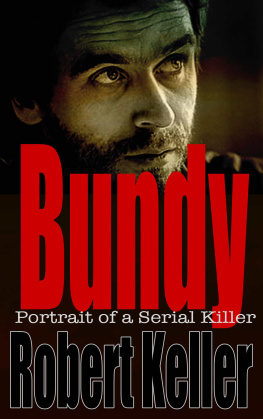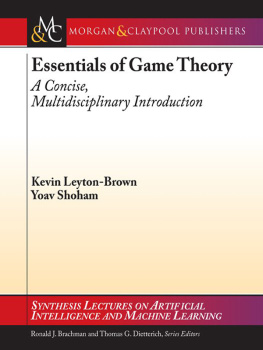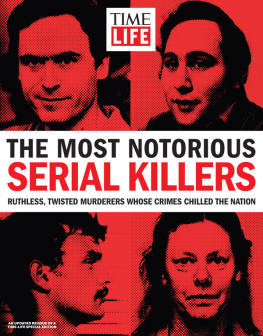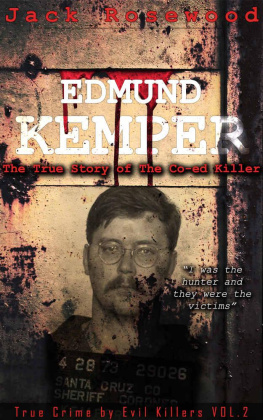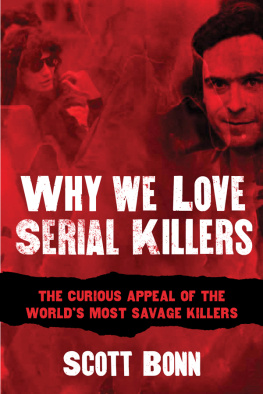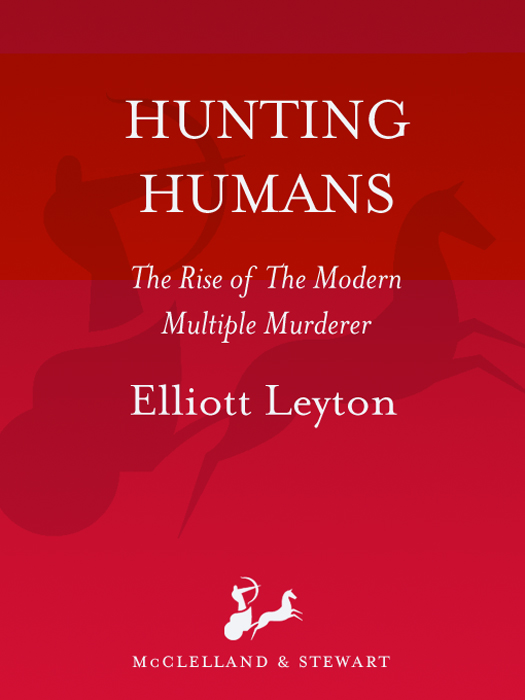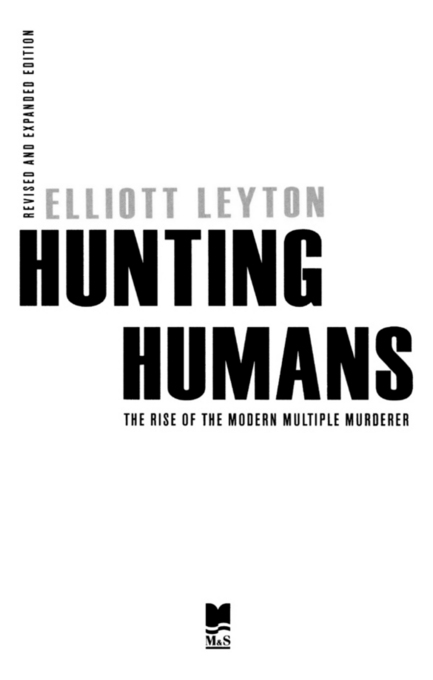B OOKS B Y E LLIOTT L EYTON
The Compact:
Selected Dimensions of Friendship (ed., 1974)
Dying Hard:
The Ravages of Industrial Carnage (1975)
The One Blood:
Kinship and Class in an Irish Village (1975)
Bureaucracy and World View:
Studies in the Logic of Official Interpretation
(with Don Handelman, 1978)
The Myth of Delinquency:
An Anatomy of Juvenile Nihilism (1979)
Sole Survivor:
Children Who Murder Their Families (1990)
Violence and Public Anxiety: A Canadian Case
(with William OGrady and James Overton, 1992)
Men of Blood:
Murder in Modern England (1995)
Touched by Fire:
Doctors Without Borders in a Third World Crisis
(photographs by Greg Locke, 1998)
Serial Murder:
Modern Scientific Perspectives (ed., 2000)
Copyright 1986, 2005 by Elliott Leyton
McClelland & Stewart trade paperback second edition published 2005 Second edition first published in the United States of America by Carroll & Graf Publishers 2001
All rights reserved. The use of any part of this publication reproduced, transmitted in any form or by any means, electronic, mechanical, photocopying, recording, or otherwise, or stored in a retrieval system, without the prior written consent of the publisher or, in case of photocopying or other reprographic copying, a licence from the Canadian Copyright Licensing Agency is an infringement of the copyright law.
Library and Archives Canada Cataloguing in Publication
Leyton, Elliott, 1939
Hunting humans : the rise of the modern multiple murderer / Elliott Leyton. 2nd ed., completely rev. and updated
eISBN: 978-1-55199-643-1
1. Mass murder United States Case studies.
I. Title.
HV6529.L49 2005 364.15230973 C2005-902672-3
We acknowledge the financial support of the Government of Canada through the Book Publishing Industry Development Program and that of the Government of Ontario through the Ontario Media Development Corporations Ontario Book Initiative. We further acknowledge the support of the Canada Council for the Arts and the Ontario Arts Council for our publishing program.
Lyric taken from one of the best-selling albums of the mid-1980s, Synchronicity, by The Police, permission from A & M Records of Canada, 1983, Magnetic Publishing Co.
McClelland & Stewart Ltd.
75 Sherbourne Street
Toronto, Ontario
M5A 2P9
www.mcclelland.com
v3.1
F OR T HOSE W HO T AUGHT M E H OW TO L IVE
especially Bonnie Leyton, Sam Feinstein,
and the Clary Family
F OR T HOSE W HO T AUGHT M E H OW TO T HINK
especially Elliot Liebow and
Philip Jenkins
AND IN M EMORY OF M Y B ELOVED L ATE A UNT
Tillie Feinstein, who talked with me late
into the dry prairie night
Contents
Preface
W hen the manuscript for Hunting Humans was completed in 1984, it was to be one of the first books in the modern world to recognize multiple murder as a significant social phenomenon, not just an isolated psychopathological incident. The book stirred controversy everywhere among those whose interests it threatenedespecially orthodox criminologists, forensic psychiatrists, radical feminists, and academics who thought the subject was too vulgar for the Senior Common Room. Still, Philip Jenkins, the dean of contemporary homicide studies, later paid the ultimate compliment when he wrote that I had done more than anyone else to place the study of multiple murder on a sound academic footing. Criminologist Steve Egger was kind enough to add that the book had made me the father of serial murder studies.
Hunting Humans was first published in Canada by McClelland & Stewart; in the United States by New York University Press (initiallyand confusinglyunder the title Compulsive Killers); and by Penguin Books in Britain. Since then, the book has gone through dozens of reprintings in many countries, as well as translations into Japanese, Spanish, and Polish. It has remained in print in the United Kingdom, Canada, Japan, and the USA. While each new printing permitted minor changes to the manuscript, the exigencies of modern publishing did not give me the chance to fully revise the bookneither to account for changes in my own thinking, nor to acknowledge the work of other researchers who had refined the issues and radically improved the quality of available data.
Thus the publication of this entirely revised, expanded, and updated second edition has given me the opportunity to incorporate fresh material from the many scholars who have enriched the study of multiple murder since the mid-1980s. It has also given me the chance to share some of the insights gleaned from my long association with international police forcesespecially New Scotland Yard in London and the South Yorkshire police, but also with the FBI Academy in Quantico, Virginia, the Royal Newfoundland Constabulary, and Dutch Interpol in The Hague. I am exceedingly grateful to McClelland & Stewart, as well as to my new American publishers, Carroll & Graf, for giving this new edition of Hunting Humans the chance to be born.
I am an anthropologist, and this book is very much a piece of anthropology. Yet the book is not written in a style that will be familiar to many social scientists. I make no apology for this, for if I admire the insights of the social sciences, I am able to keep well under control any passion for their style of exposition. Long ago, renowned McGill University archaeologist Bruce Trigger and I agreed that the ugly and impenetrable specialist jargon commonly deployed by modern social scientists constitutes more than just a literary disaster; it is a betrayal of the democratic spirit that founded the modern university. It is also an abandonment of the mandate of that university, which is to make the results of scholarly research accessible to the informed general reader.
In this regard, I merely try to emulate the literacy and grace of sociologically inclined historians such as Douglas Hay or Hugh Thomas. A union between historians, psychologists, novelists, historical sociologists, and anthropologists is long overdue; for it is only with the special gifts of all of them that we can hope to join George Eliots scientists in piercing the obscurity of those minute processes which prepare human misery and joy, those invisible thoroughfares which are the first lurking places of anguish, mania and crime, that delicate poise and transition which determine the growth of happy or unhappy consciousness. Although I remain scrupulously wedded to empirical fact throughout this book, treating interviews and published material as if they were my field notes, I feel free to take my intellectual pleasures where and when I find themnecessarily so, since this is as much an exercise in historical reconstruction as it is anything else.
Finally, I must apologize to my readers around the world for forcing them to read about so much human suffering and degradation. We can only bear it if we remind ourselves that the eradication of a disease requires the intensive study of all its pus and blood and deformed tissue. So far, the only reliable cure we have discovered is madame guillotine. Regrettably, while her use may provide us with some arcane satisfaction, she can do nothing to staunch the outbreak of this most modern and virulent of social epidemics.




